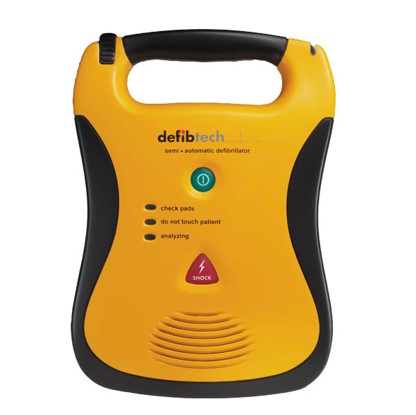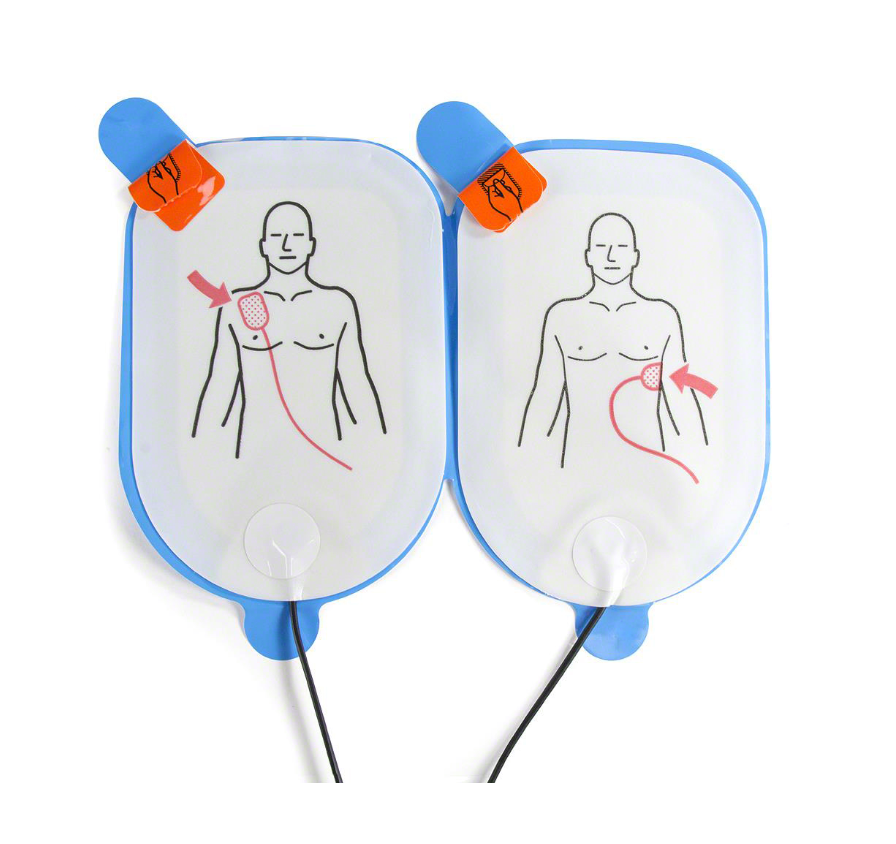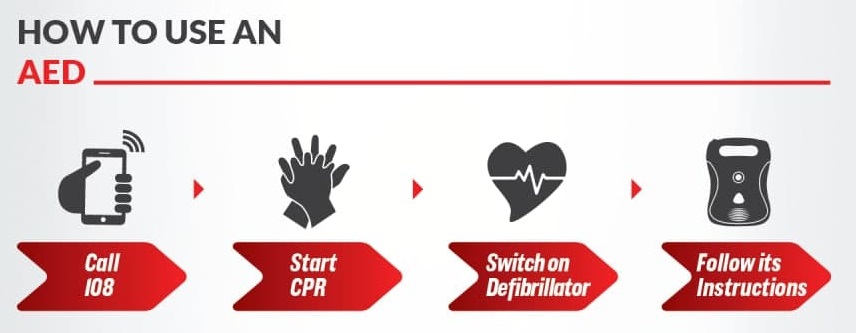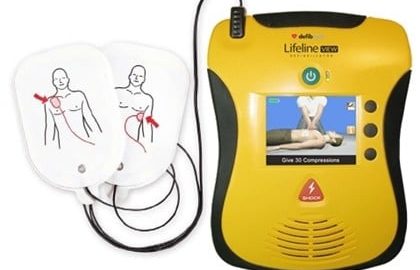Thanks to all the readers who have appreciated my last blog, Live Life Save Life where the characters Maggie and Jaggy discussed what to do in a Cardiac Arrest. The feed back received has only spurred me to continue to write better as it has increased the expectations of the readers. In this blog too Maggie and Jaggy will discuss more on Saving lives. Let us follow the conversation.
Maggie: “Hello Jaggy. You are looking great and in good health”.
Jaggy: “Yes, Maggie all is well with me looking forward to live life save life”.
Maggie: “Thank you for the conversation where you had explained the difference between Heart Attack and Cardiac Arrest and the first aid to be done”.
Jaggy: “Teaching skills that saves life is always a pleasure”.
Maggie: “Last time you had explained 2 steps of the Chain of Survival and particularly CPR. Can you explain more on the 3rd step the defibrillation”?
Jaggy: “Sure Maggie. In CPR by we are only circulating oxygenated blood to the brain and thereby we can save life, but every time CPR alone cannot do the job. The heart is to be jolted with a bit of electric current to get back to its normal rhythm”.
Maggie: “You mean we need to give an Electric shock? Can a first aider do that”!
Jaggy: “This is not something new Maggie. This technique has been around for a long time. Doctors and health care workers use it every day to save lives”.
Maggie: “Doctors always save lives, but can you explain more clearly”?
Jaggy: “In many a movie we have seen doctors performing a surgery on someone. Suddenly you see the monitor go erratic and the doctor shouts Cardiac Arrest!!! Immediately the doctor is handed over two small square shaped boxes to which gel is applied and the doctor uses them on the chest of the patient. Miraculously the person is revived”.
Maggie: “I have seen that, but movies are movies. Never real”.
Jaggy: “I know but not everything in a movie is fantasy. The doctor in the movie uses a device called a Defibrillator. Defibrillator is a device which jolts the heart into a normal rhythm. The doctors use a Manual Defibrillator wherein they decide the amount of shock to be given. First aider is not a doctor. So, they use an AED. Automated External Defibrillator”.

Maggie: “Wow! Interesting. Love to know more”.
Jaggy: “An AED is in fact very simple to use. All one needs to do is just switch it on. Once switched on the AED by using voice prompts guides the first aider on how to use it”.
Maggie: “Sounds nice but can you be more specific on how to operate it”?
Jaggy: “Imagine some one suffered a Cardiac Arrest and is not responding. You need to ask someone nearby to call the Ambulance and get the AED. As the victim is not breathing you have started CPR. Once the AED arrives and switched on, it will prompt the user to Attach Pads to Patient’s Chest. Pictures on the pads will show you where exactly to attach it.

Once the pads are attached the AED will prompt Analysing Heart Rhythm. Do not touch the patient. CPR is stopped while the AED analyses. After a few seconds comes the instruction Shock Advised, Charging, Stay clear. The machine then delivers the shock. The patient will jerk a little which is normal. The AED then says it is safe to touch the patient. Begin CPR now. You perform CPR till the AED prompts you to stop and it reanalyses. Thus, with a combination of CPR and shock from the AED, lives can be saved during Cardiac Arrests”.

Maggie: “How soon we need to use an AED after a Cardiac Arrest”?
Jaggy: “Within the first 5 minutes. The sooner the better. If delayed the chances are going to be slim”.
Maggie: “It is indeed a life saving machine. Where all can we have an AED”?
Jaggy: “An AED can be placed anywhere. Usually, the ambulances are equipped with Defibrillators. In many countries they are available in Airports, Railway stations, Bus stations, places of work, and even schools. I mean they can be everywhere”.
Maggie: “Now that you have mentioned Schools, do we use different pads for children or infants”?
Jaggy: “Yes. The pads used are different, but if they are not available adult pads can be used. Children and infants rarely suffer Cardiac arrests”.
Maggie: “Nice Jaggy. Do we need to be trained to use it”?
Jaggy: “A first aider needs to be trained on how to use it. Most of the manufactures and sellers of AED arrange a training on how to use one. All one needs to do is attend. Even if not trained they can call the Emergency services who can guide them on how to use the same”.
Maggie: “Thank you so much. I’ll watch videos and attend a training for sure”.
Jaggy: “To sum up I would say this”.
CPR = Human effort
AED = technology
Human Effort + Technology = Miracles
More from Jaggy and Maggie in my next blog.
Thanks for Reading and Sharing.
Loving you all so much.
Seshadri Varadarajan.
